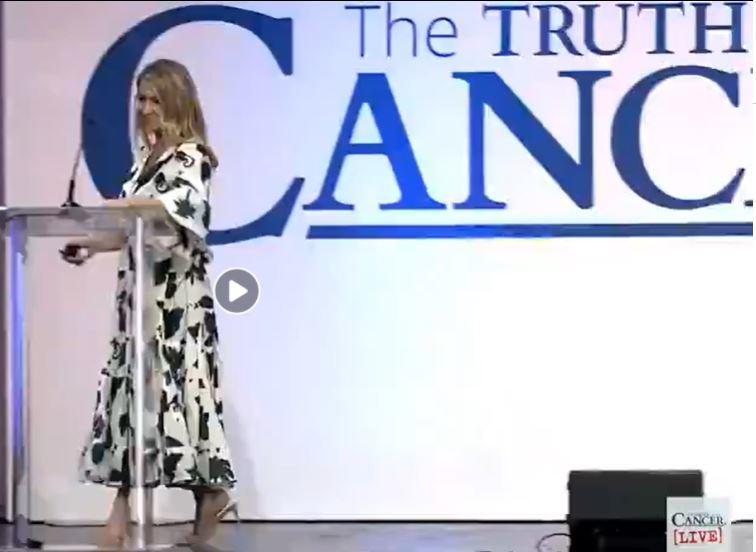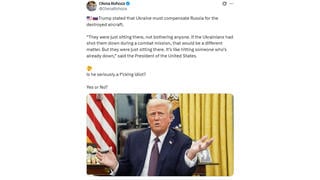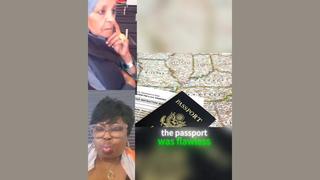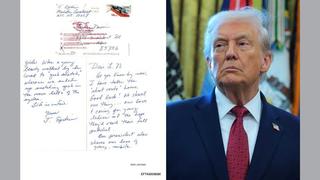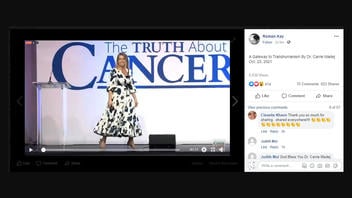
Do COVID-19 vaccines approved in the United States contain hydrogel nanobots that multiply, rewrite human genetics and erase and plant memories in human brains? No, that's not true nor even possible in 2021. No private or academic lab has laid claim to the ability to make a robot that could pass through a COVID vaccine hypodermic needle carrying the kind of technology this video describes. Plus, hydrogel is not the name for a unique material. It's the term for a set of properties, regardless of chemical composition. A spokesman for the Defense Advanced Research Projects Agency (DARPA), which this video accuses of unleashing hydrogel nanobots, told Lead Stories that DARPA-funded hydrogel research has helped create only sensors and that they are passive and too big to qualify as nanotechnology, which is commonly defined as 100 millionth of a millimeter or smaller, basically the size of atoms and molecules.
The claims were made in an October 26, 2021, Facebook video (archived here) published under the title "A Gateway to Transhumanism By Dr. Carrie Madej." It opened:
I'm going to be talking about some ugly things that are happening in our world...it is my belief that these injections they falsely call vaccines are the gateway to transhumanism ...
This is what the post looked like on Facebook at the time of writing:
(Source: Facebook screenshot taken on Fri Oct 29 23:33:04 2021 UTC)
The video, 43 minutes long, contains numerous claims by Dr. Carrie Madej, a Georgia-licensed doctor of osteopathy, who says she has seen a nanotechnology-based "self-aware" organism self-assembling in samples of Moderna and Johnson & Johnson COVID vaccines. This fact check will focus on the main claims she makes in support of her claim that hydrogel is being used to create "transhumans" that will be controlled through injected technology.
DARPA's chief spokesman, Jared Adams, said the agency's support for Profusa's hydrogel research project has created nothing of the sort. In a November 2, 2021, email to Lead Stories, Adams wrote:
These claims are patently ridiculous and would be humorous if no one paid them any attention...The Profusa hydrogel is inert, does not have any electrical components, and is of similar material to a contact lens or corneal implant...For these reasons, there is no such thing as a "biochip," nor does it have self-assembling "nanobots with artificial intelligence capabilities."
Funded by DARPA since 2011, biosensor maker Profusa set out to create an implantable sensor to give doctors, nurses and patients a way to see real-time data on changes in body chemistry in response to illness, injury or routine daily activity, Adams said. Profusa gained National Institutes of Health funding to develop hydrogel sensors implanted just beneath the skin that can stand up to the foreign body response that plagues implanted devices. An external device is necessary to read the blood chemistry sensed by the object. Adams said the DARPA-backed device has no way of interfering with the human genetic code.
Madej's claims that DARPA scientists are on a quest to create transhumans rest on a series of false claims:
False Claim: Injected hydrogel can make more of itself and can meld with natural tissue to download information direct to the brain
At the 5:50 mark in the video, Madej has described a globalist cabal's plans for world dominion through mind control, using the term "transhumanism" to described humans with technology implanted. She says her proof is that the U.S. military has begun using hydrogel to download skills and knowledge directly into Blackhawk helicopter pilots' brains:
... DARPA ... They're the Black Ops/sci-fi kind of portion of the Pentagon... And so. one of the things you need to know is this substance called hydrogel ... It's a sci fi substance that can do many things. It's actually it's very analogous to the human tissue. So we usually don't reject it in the body. It can assemble, disassemble, reassemble, innumerable times. It can make more of itself in your body ... They've used it in military projects already. So just so you know, an example of that would be there is a group, a small group of Blackhawk helicopter as a project and when they sat in the aircraft, they'd have to wear a magnetic helmet and at that moment, everything - all their eye movements and everything they thought - the aircraft would know immediately to do it, would respond. The aircraft and the person, the pilot. was one. And if they had an upgrade, they didn't have to study. They just sat in the cockpit and then it was downloaded into their brain.
Impossible, the DARPA spokesperson wrote, noting the size problem and the passive nature of hydrogel implants:
Even if the sensor were placed in the brain and were at nanoscale, which it is not, it's not possible for it to rewrite memories in the brain nor place new memories in the brain. The sensor has no means of communicating with a phone nor a computer, and it cannot send/receive any electronic signals...It is inert and incapable of self-replicating...the sensor is passive and cannot travel in the body nor "meld" with tissue.
Impossible Claim: The hydrogel nanobots are being injected with COVID-19 vaccines
At the 7:58 mark, Madej says hydrogel is being used to place technology in humans via the COVID-19 vaccines:
So how in the world could they get nanobots in our body? How could they upload everything? How could they know our thoughts? How can they know our dreams? How could they monitor everything? How could this happen? Because they're doing it right now through these injections falsely called vaccines.
DARPA spokesman Adams said the size of the hydrogel technology DARPA helped develop makes this impossible. The device that exists in the real world would be visible to the human eye and many times too big to fit through the needle of the standard 22-25-gauge hypodermic needles. Adams explained:
Nanotechnology is very broadly defined as technology at the scale of one-billionth of a meter. Profusa's hydrogel sensors, while indeed small, do not meet this metric. Indeed, the Profusa hydrogel, similar in size to a grain of rice, is ~6000-fold larger than anything at the "nano-scale" and therefore does not meet the criteria for nanotechnology.
False Recycled Claim: The virus that causes COVID-19 has never been isolated in a lab
At about 8:19, Madej repeats an often-debunked false claim made by COVID-deniers: that no lab has ever isolated the SARS-CoV-2 virus that causes COVID. She says:
No, there is no virus at all that they have documented. There's over 70 Freedom of Information acts, you know, we don't have the virus on file anywhere in the world. Nobody has it in their lab.
Shortly after the first U.S. patient was diagnosed near Seattle on January 20, 2020, a team of Centers for Disease Control and Prevention (CDC) scientists, university scientists and private lab scientists published their account of isolating the virus and placing it in two virus repositories available to the public health and research communities. Similarly, independent teams of virologists in places like Turkey have isolated samples of the SARS-CoV-2 virus and made them available to scientists working on identification, prevention and cures.
Researchers in microbiology and infectious diseases have fast-track access to samples of the isolated strains of SARS-CoV-2 through BEI Resources, the National Institutes of Health clearing house for samples of fungal, parasitic, viral and other pathogenic materials and organisms.

